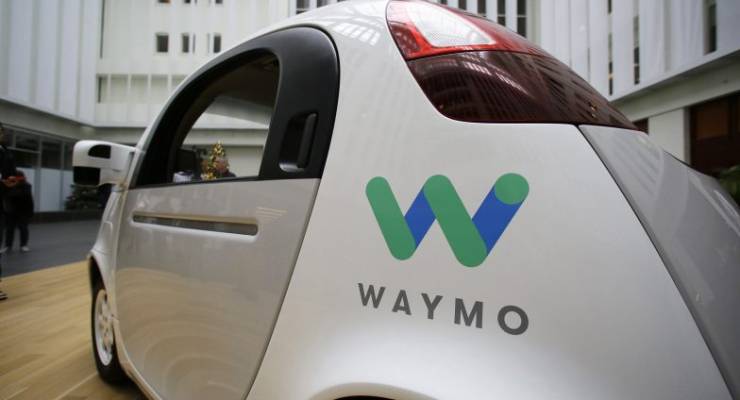
In the last few years, fighting against driverless car hype has been a Sisyphean task. Eye-catching predictions and empty promises hogged all the oxygen in the conversation even as the technology stalled and racked up major failures.
Hope was running far ahead of what the software could do. But now, a qualitative change is emerging in the nature of the driverless hype. While companies like Zoox are still putting out puff pieces all about their long-run potential, Waymo appears to be actually getting something concrete done.
Waymo was Google’s driverless car project. It is owned by Alphabet, the company formerly known as Google. Last week some information about Waymo emerged that was materially different – a clue things are finally, and in a limited way, getting real.
A Bloomberg story described a Waymo pilot program with 400 customers in an area of Phoenix, Arizona. They have free access to a fleet of driverless cars and have been using the technology to get around. The cars operate with a driver in the drivers seat – but only most of the time. Sometimes, apparently, Waymo is confident enough send cars out sans back-up driver – a huge step.
The cars are not the little bubbles Google was working on years ago. Waymo changed tack to give up on car design and focus on software. It now fits its many sensors and interior displays to a generic Chrysler minivan called the Pacifica. It has a deal to buy 62,000 of them.
Lining up the ones and zeroes
Waymo’s self-driving strategy is different to that of Tesla and General Motors. Rather than aiming to provide a car that can do self-driving under some circumstances, it wants one that never needs human intervention. This is a harder challenge, but avoids the “hand-off” that ugly moment where a car decides it can’t cope and throws responsibility back to its occupant, whose level of engagement at the time is unknown.
Waymo differs from other driverless car makers in another way too. It uses detailed three dimensional maps of the roadways it operates on, rather than solely expecting the car to infer the presence of various features through its sensors.
Waymo’s plan is to make the ride-hailing service more widely available in Phoenix Arizona at a price likely to be similar to the price of an Uber. For now, Waymo is recruiting more residents of Phoenix to join its “early rider” program in the city, and partnering with the city’s public transport provider to get its employees to and from work.
Beyond AZ
Going driverless seems to works well in this ten by ten mile space in Phoenix, Arizona, a place known for its clear weather, wide roads, shortage of pedestrians, and friendly laws. In 2015, to attract driverless car testing companies, Arizona changed the law so the word “driver” refers to either a human or a computer.
This physical and regulatory utopia is far from being proof driverless cars are ready for primetime all over the world. In Australia, Waymo would need to contend not only with left-side driving and trams but also kangaroos, whose movement is apparently quite perplexing for systems designed to extrapolate the trajectories of less bouncy animals.
Risks abound all over the world, because computers are imperfect and humans use roads in ways which driverless cars may misunderstand – with horrible consequences. A driverless car owned by Uber hit and killed a pedestrian wheeling a bicycle across a road in March this year.
For now Waymo’s appears to be on the right track, but that could turn on a single incident. Even if Waymo can get its product working smoothly, it will surely not be the final word in driverless car technology. This iteration of driverless cars will probably be to the final product as the Palm Pilot was to the iPhone.
Our preparations
Whether the driverless future is truly upon us or not, Australia is getting ready. A detailed report emerged just last week from Infrastructure Victoria. It visited the Waymo program in Arizona and reports on it like this:
The general community reaction to automated vehicles in Chandler [Arizona] has also been a bit of an anti-climax – they are seen as ‘boring’ drivers, with one person we met with telling us it’s “like driving behind my Grandma.
The report considers a range of scenarios, including one in which driverless fleets like Waymo’s take over. It models a 5 kilometre trip as costing $4.50, or even less under a subscription model. In this scenario the number of vehicles in Victoria falls from 3.5 million now to 260,000 in 2046. But those cars would be working very hard – operating over eight hours a day.
Traffic capacity of the roads would be increase by 75% as the automated vehicles operate more efficiently. Traffic is therefore forecast to be lower, with 82% less delays in peak hour. It doesn’t entirely go away though: “the number of automated vehicles ‘empty running’ from one trip to the next keeps traffic volumes high – especially in the inner city.”
So keep a close eye on Pheonix Arizona, because in this case, the hype might be justified. If Waymo’s program works well, the world could eventually look very different.








“Risks abound all over the world, because computers are imperfect and humans use roads in ways which driverless cars may misunderstand – with horrible consequences. A driverless car owned by Uber hit and killed a pedestrian wheeling a bicycle across a road in March this year.”
– The acceptable standard for driverless cars cannot be “never has a crash, never kills anyone”. The way some writers seem to glory in reports of every crash….
The acceptable standard should be that it has at-fault crashes and has casualties significantly less than human drivers over the same distance and time, and hopefully will also be able to avoid more not-at-fault crashes than a human driver too.
Y
“The acceptable standard should be … casualties significantly less than human drivers…” Amen to that, Arky. Let’s get on with this adventure, have those incidents and learn from them. With a similar mentality, the heavier-than-air industry progressed to become the safest way to travel.
The legal implications of deaths or injuries attributable to driverless cars could turn out to be a bit of a can of worms.
If a human driver makes an error that is not provably the result of illegal activity or negligence – eg disobeying a traffic sign or signal, texting on the phone, being intoxicated etc – their mistake can be attributed to human error or that perhaps bad road design/conditions had contributed to the error. Humans only have two eyes; reaction times are only so rapid. We are only so resistant to distraction etc. To err is human.
If the same mistake were made by an AI controlled vehicle, it seems obvious that those who have suffered a loss as a result (and their driver-less car chasing lawyers) could go after a wealthy corporation for not equipping the car with more smarts, more sensors or better software etc.
The example of the woman run down crossing the road with her bicyle in the USA serves – the test car involved reportedly had far fewer sensors (LIDAR) then earlier test models. The reduction in the sensor equipment was about achieving lower costs for future production models but it made the pedestrian undetectable until the woman was in front of the car and by then it was too late to respond.
Apart from mineownself, I could not be happier if the majority of drivers, currently allowed to (pretend to) control a tonne plus of metal at more than walking speed, were to disappear from the road.
Incompetent the gizmos may be but at least they are unlikely to be drunk, drugged, suicidal, malevolent or trying to control screaming kids & slobbering dogs at 60+kph.
Prof Phil Koopman’s “Safe Autonomy” blog may interest https://safeautonomy.blogspot.com/
There is a lot of hype, but in this case we know driverless cars are a fact and are the future. Vastly increased computer power coupled with 5G (and later 6G) will allow an greatly improved and secure AI technology. I expect the prime drivers of the technology will be India and China. Both currently import vast amounts of oil and have increasingly mobility hungry populations.
I fully expect in 10 or 15 years, when I need to go to work/shop/doctor/airport, I’ll dial up a local autonomous taxi. It’ll arrive within minutes, have hot coffee or cold drinks and the (future version of the) internet available. Two things are certain, it’ll be far cheaper than owning/driving my own car and Australia will lag years behind the rest of the world in the implementation.